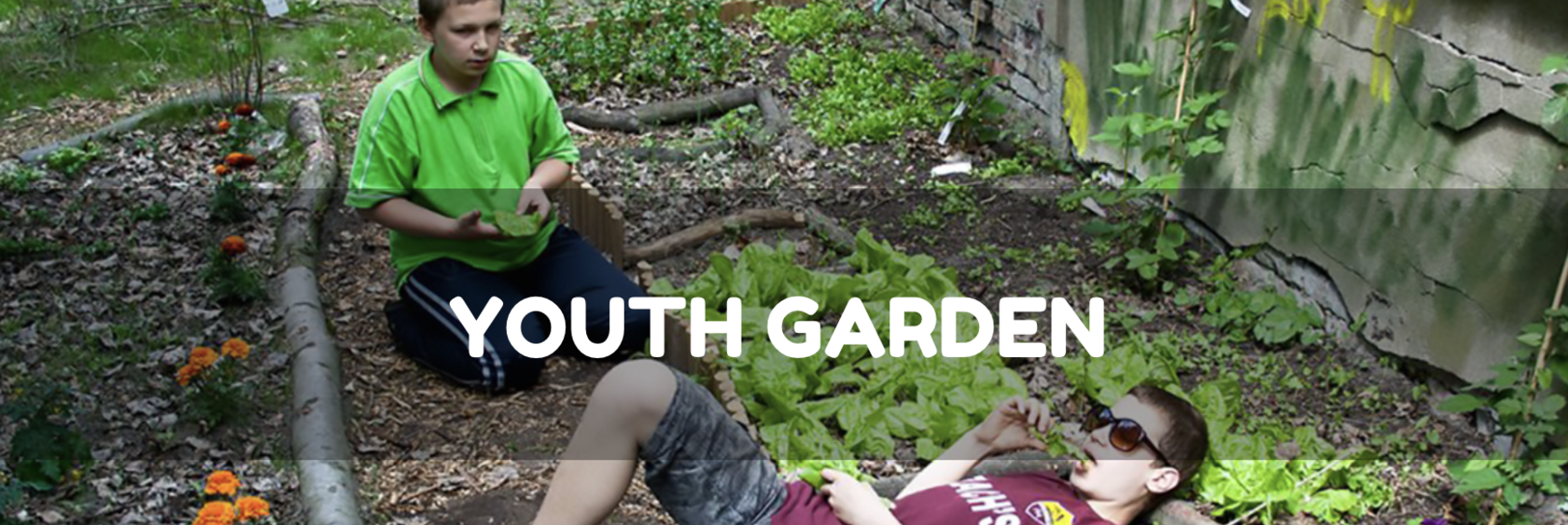YOUTH GARDEN

Introduction:
A garden can be an outdoor classroom for most of the themes on this website. Themes are perfect for creating a sense of the seasons and a garden, as an outdoor classroom, can provide a living context for learning about the world we live in. A green environment offers a variety of systems for learning “the language of nature”: ecology, interdependence, diversity, cycles, boundaries, energy, resources, succession and sustainability. A garden brings the natural world (literally) to the fingertips of students.
Roadmap:
- In preparation, students choose the ingredients for a spaghetti meal. In doing so, let them choose between:
- Organic versus conventionally produced vegetables
- Locally grown or imported products
- More expensive local businesses versus cheaper chains
- Convenience versus quality
- They then discuss the true costs (economic, health and environmental) of their choices, as well as the many changes within food production over the past century and the impact of supporting or not supporting the local economy.
- Students gather background information on themed gardens, such as:
- Historic gardens bring history to life. Choose an area and time and research what gardens were grown at that time.
- Butterfly gardens contain native plants that are attractive to butterflies. Research what butterflies live in your area and what plants they depend on.
- Ecosystem gardens help explore what an area looked like before humans “took over. Students can research the history of the local landscape and then recreate it based on what the area used to look like. Consider a heather garden, woodland garden or meadow garden.
- Heritage gardens teach the importance of conserving biodiversity. Try collecting and/or growing “forgotten vegetables” and both wild and cultivated varieties.
- Food gardens make students aware about where their food comes from. They learn about making food choices for a healthy diet and eating seasonal foods grown locally.
- Students work in groups to make a plan for a bed in the garden and then go about making it. Depending on the space available, divide the group into subgroups, which plan an individual bed for an entire season, sowing, planting, tending, watering, weeding and possibly harvesting.
- Students will keep a garden journal during construction with observations, data, work, analysis of his or her experiences, reports and/or drawings.
Dream big, but start with an achievable plan. Consider developing a long-term plan, adding a few components each season.
Target:
A living laboratory, in the form of a planter, outdoor or indoor garden, provides a rich context for increasing understanding of science, nutrition, social dynamics, economics, spirituality, leadership and management, among others.
Learning outcomes:
Students will learn the basic principles of food production and distribution. They can use the garden to learn social skills and systems thinking.
Necessities:
Flipchart and outdoor space for growing food crops and flowers. Seed, manure, compost, mulch material, water and garden tools.
The essential components of a garden learning system:
- Outdoor Meeting Room
- Beds or planting beds for each plant group
- General growth area
- Special project area for experiments
- Compost heap
- Tool shed or storage area
- Sink
- Greenhouse or hothouse
Evaluation:
Review at regular intervals with the whole group. How do students feel about being able to grow their own food? How does this fit into society? How can this be used in the rest of the world? What was the most important thing that happened in this activity? What issues are they still missing?


0 comments
Leave a comment
Please log in or register to post a comment